Climate change is a human rights issue and nations and industries who have benefited financially from massive greenhouse gas emissions have an obligation to assist those impacted by global warming, especially the most vulnerable nations and communities who have contributed least to the problem. In this blog, C George Thomas explores the concept of climate justice and its implications for dealing with the impacts of climate change.
CONTEXT
Climate change affects everyone, but its impacts are not shared equally or justifiably by rich and poor, men and women, or older and younger generations. There is also a huge gap between developed and developing countries. In other words, the climate crisis should also be viewed through the human rights lens! Whatever be the consequences, underprivileged people should also be able to live, work, study, and play in a healthy and clean environment along with basic facilities. It cannot be accepted that climate crisis affects only ordinary people, their lives, livelihoods, language, and culture. Scant concern to such problems on human rights in climate talks is the reason why the concept of ‘climate justice’ came to the fore.
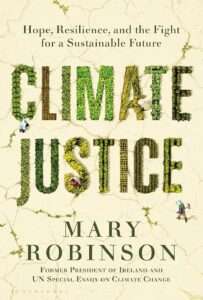 The concept of ‘climate justice’ has attracted experts, human rights activists, and ordinary people alike. For example, the University of California has established a ‘Centre for Climate Justice’1 and even runs an undergraduate course on climate justice. Books on climate justice have also been published. A popular book is Climate Justice: Hope, Resilience, and the Fight for a Sustainable Future that was published in 2018 by Mary Robinson, former President of Ireland and the former UN High Commissioner for Human Rights. Climate justice “insists on a shift from a discourse on greenhouse gases and melting ice caps into a civil rights movement with the people and communities most vulnerable to climate impacts at its heart,” says Ms. Robinson.
The concept of ‘climate justice’ has attracted experts, human rights activists, and ordinary people alike. For example, the University of California has established a ‘Centre for Climate Justice’1 and even runs an undergraduate course on climate justice. Books on climate justice have also been published. A popular book is Climate Justice: Hope, Resilience, and the Fight for a Sustainable Future that was published in 2018 by Mary Robinson, former President of Ireland and the former UN High Commissioner for Human Rights. Climate justice “insists on a shift from a discourse on greenhouse gases and melting ice caps into a civil rights movement with the people and communities most vulnerable to climate impacts at its heart,” says Ms. Robinson.
It is common knowledge that the global warming problems generated during the last 200 years are due to the flawed actions of humans. However, those from poor countries have little, or no, role in this imbroglio. It was only after the 1950s that the poor countries who gained independence from colonial rulers began to rise economically. Countries such as the United States, United Kingdom, and Japan developed and became rich by emitting huge quantities of greenhouse gases from the beginning of the industrial revolution. Countries like India, which were under colonial rule, did not either get that opportunity or were denied it.
WHAT IS CLIMATE JUSTICE?
Climate justice refers to environmental justice related to the climate crisis. It is an approach to climate action that focuses on the unequal impacts of climate change on marginalized populations. Climate justice implies that those nations, industries, companies, and individuals who have benefited financially from massive greenhouse gas emissions have an obligation to assist those impacted by global warming, especially the most vulnerable nations and communities, who have contributed the least to the problem. Climate justice has many dimensions. Structural inequalities, socio-economic inequalities and intergenerational inequalities are important2. The impacts of climate change can be unevenly felt within the same country due to structural inequalities based on race, class, religion, gender, and socio-economic status. Low-income countries and vulnerable populations are more susceptible to climate-induced loss and damage. Likewise, today’s children and youth are not significant contributors to the climate crisis; but they too have to face its serious impacts.
Extreme weather events, including storms, hurricanes, floods, and wildfires, are increasing every year around the world. These affect all countries indiscriminately, but developing countries and the least developed countries are more prone to the devastating consequences of climate disasters. The vulnerabilities of these fragile nations turn frequent extreme weather events into full-blown humanitarian crises. According to the United Nations Office for the Coordination of Humanitarian Affairs3, at least 12,000 people died globally in 2023 due to floods, wildfires, cyclones, storms, and landslides, a 30 percent increase compared to the 2022 figure. It is in these contexts that the term ‘climate justice’ gets more important. ‘Climate justice’ has also been included in the report of the UN’s Intergovernmental Panel on Climate Change (IPCC). Nearly half of the world’s population lives in areas vulnerable to climate change, according to the Synthesis Report, the final chapter in the IPCC’s sixth assessment. In the past decade, deaths from floods, droughts and storms were 15 times higher in developing countries than in developed countries.
Inequality in carbon emissions – based on consumption – exists between countries and among different income groups within a country. Globally, the top 10 percent of the world’s population is responsible for nearly 50 percent of carbon emissions4. Two-thirds of them live in developed countries! People with the lowest income, about 50 percent of the world’s population, is responsible for only 12 percent of total emissions! But they have to bear the brunt of its deleterious effects. It is certainly not fair that climate change affects those who are least responsible for global warming, and that they have to suffer more because of it!
The concept of climate justice addresses a wide range of social, racial, and environmental injustices while seeking solutions to address the root causes of climate change. As economies transition to sustainable practices for combating climate change or for protecting environmental processes such as biodiversity, the rights and livelihoods of ordinary people and workers must be protected. A framework has been developed by the trade union movements to ensure that this transition is a ‘Just Transition’. For example, suppose a country is phasing out fossil fuels. Any resulting difficulties – loss of livelihoods, jobs, etc. – must be factored into such a transition so that it will be a righteous conversion! The International Labour Organization (ILO) defines just transition as: “Greening the economy in a way that is as fair and inclusive as possible to everyone concerned, creating decent work opportunities and leaving no one behind.” This concept has gained much attention in efforts to achieve environment and climate goals by involving workers and other communities.
HISTORICAL EMISSIONS: WHO IS RESPONSIBLE?
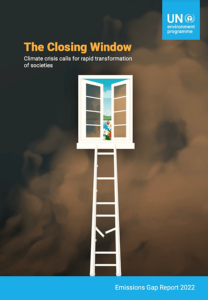 Global warming and climate change are not some distant risks, they are right here before us as realities! Who are those responsible for this situation? At the 27th Conference of Parties (COP27) to the United Nations Framework Convention on Climate Change (UNFCC), there was intense pressure to hold countries such as India and China who came to the development pathway very recently also accountable for historical emissions. Most developing countries were concerned that rich countries would force them to revise their climate goals through mitigation without increasing the availability of technology and funding. India, backed by other developing countries, blocked efforts by rich nations to focus on the top 20 carbon dioxide emitters without considering issues such as climate justice, historical emissions, and per capita emissions.
Global warming and climate change are not some distant risks, they are right here before us as realities! Who are those responsible for this situation? At the 27th Conference of Parties (COP27) to the United Nations Framework Convention on Climate Change (UNFCC), there was intense pressure to hold countries such as India and China who came to the development pathway very recently also accountable for historical emissions. Most developing countries were concerned that rich countries would force them to revise their climate goals through mitigation without increasing the availability of technology and funding. India, backed by other developing countries, blocked efforts by rich nations to focus on the top 20 carbon dioxide emitters without considering issues such as climate justice, historical emissions, and per capita emissions.
The Emissions Gap Report 2022: The Closing Window5 released by the UN Environment Programme (UNEP) shows that the USA is responsible for most of the historical carbon emissions from 1850 to 2019. They are responsible for 25 percent of global warming although they make up just 4 percent of the world’s population! In the second place is the 27-nation European Union with 17 percent. China is third with 13 percent, followed by Russia with 7 percent. Meanwhile, India is responsible for just 3 percent but with 18 percent of the world’s population. The Least Developed Countries (LDCs) all together own only 0.5 percent!
Let us now look at the latest (2022) carbon emission situation. According to UNEP’s ‘Emission Gap Report 2023: A Broken Record’6, China, which is home to 17 percent of the world’s population, is in first place, with 30 percent of total carbon emissions. The USA is in second position with 11 percent emission. India, more populous than China, comes third with 7 percent emissions. The European Union, a 27-nation bloc with 6 percent of the world’s population also has a share of 7 percent emission. Although the least developed countries (49 countries) accounted for only 0.5 percent of historical carbon emissions, their share is 3 percent in 2022! The rich countries are worried about the increasing carbon emissions of the underdeveloped and developing countries. When considering climate justice, in addition to carbon emissions of various countries, per capita emissions, level of development, and sustainability should also be evaluated.
Huge gap in per capita emissions
According to the latest statistics adopted by the UNEP, global per capita greenhouse gas emissions in 2022 was 6.8 tonnes (CO2e)7. When you disaggregate the data, it was 17.9 tonnes for USA, 11 tonnes for China and 8.1 tonnes for European Union. Russia (18 tonnes), Canada (19.8 tonnes) and Australia (22 tonnes) are not bad either. However, during this period, India’s per capita carbon emission (CO2e) was just 2.8 tonnes! Experts predict that the temperature increase will stay below 1.5 degrees, if the world could bring down the global average per capita emission from 6.8 tonnes to 4 tonnes. Note that India’s mean per capita emission is much below this figure.
Consider the present situation critically. Rich nations are unwilling to change their luxurious lifestyles; instead, they are exploiting vulnerable countries for less costly mitigation alternatives such as carbon offset credits and REDD+ (Reducing Emissions from Deforestation and forest degradation in Developing countries). They also indulge in dishonest greenwashing (greenwashing is the act of making false or misleading statements about the environmental benefits of a product or practice). The United Nations has warned against greenwashing.8
Survival emission and luxury emission
It is true that complete prevention of carbon emissions is impossible. Emission will also take place through the human activities for survival. To separate this kind of emission that is essential for survival, the terms survival emission and luxury emission have come up. India’s argument is that the majority of carbon emissions in India are ‘survival’ emissions and not ‘luxury’ emissions as in the case of rich countries. India cannot stop or reduce survival emission without finding effective alternatives. For example, Western industrialized agriculture produces huge ‘luxury’ emissions in the process. The small-scale agriculture for the survival of the Indian masses cannot be compared to this luxury affair. How can rich nations justify asking countries, like India, to immediately cut survival emissions, for example, methane from livestock farming and rice cultivation, without fulfilling the responsibility to reduce their luxury emissions?
We know that greenhouse gases (GHGs) are produced by both natural processes and human activities. The latter includes survival emission and luxury emission. In this regard, nations who produce luxury emission must bear the greatest responsibility. Note that global warming is not a localised phenomenon. Because GHGs accumulate in the atmosphere globally, it does not matter where exactly they end up. Reducing them anywhere is beneficial. However, nothing is going to change just because the world’s major polluters are not straightforward and are crushing the development dreams of a few poor countries in the name of immediate mitigation!
POSSIBLE WAYS TO SURVIVE GLOBAL WARMING
There are several ways to overcome the perils of global warming. However, world nations must move away from rhetoric to action and fulfil their responsibilities in a timely and sustainable manner. Experts suggest five actions: (1) Adaptation; (2) Mitigation; (3) Finance; (4) Technology transfer; and (5) Capacity building. Of these, the first two – climate adaptation and climate mitigation – are more important. The remaining three are just follow-ons. For coping with unseasonal rains, floods, and droughts, poor countries need to spend billions on adaptation. In the meantime, it is not fair to ask them to do more carbon mitigation measures immediately. Instead, they should be given financial assistance and technology to tide over the situation.
Developing countries, such as India, will have to prioritize climate adaptation over mitigation. People need houses, roads, and energy for a decent living. None of these can be achieved by straightforward mitigation. Having realized the dangers of going net zero by 2050, India insisted on 2070 as its target year. Presently, the population of India is estimated to be 141 crores and may reach 167 crores in 2050. That means food production will also have to increase!
After much lobbying, finally a `loss and damage’ fund was formulated during COP28. ‘Loss and damage’ refers to a range of impacts caused by climate change such as loss of human life, damage to infrastructure and buildings, loss of property and crops, as well as degradation of ecosystems. ‘Loss and damage’ is closely related to the concept of climate justice and equity. The fund is intended as a compensation from the developed countries (Annex II – parties under the UNFCC) who are truly responsible for climate change to vulnerable countries that must suffer the consequences even though they are not participants in it. It is estimated that vulnerable countries will have to spend 215 to 387 billion dollars annually to overcome climate change problems and adapt9. Although the countries who are actually responsible for climate change have pledged only about US$ 0.7 billion, the existence of such a fund and its operation appear promising. It is hoped that more funds will flow into this fund over time and that developing countries will be able to adapt more effectively to survive the disasters of global warming.
At the COP28, a decision was taken to ‘phase away’ the use of fossil fuels such as coal and petroleum. Some countries insisted that the wording should have been ‘phase out’ instead of ‘phase away’ or ‘transition away’. Naturally, the OPEC countries stood against ‘phase out’. Countries, including India and China, which are heavily dependent on coal for energy production, have adopted a ‘phase down’ approach to the use of fossil fuels. With more than 70 percent of India’s electricity coming from coal, India cannot completely abandon coal without finding effective alternatives. The only solution is to achieve a gradual transition away from fossil fuels. What is striking about this is that the developed nations, including the USA, UK, and the European Union, have supported those who have called for a ‘phase out’ of fossil fuels! It seems they have some other motives! They know very well that OPEC countries, as well as China and India, are unlikely to agree to a ‘phase out’! Either they are looking for a green wash or they have found great alternatives!
ENDNOTE
One thing is certain, the Paris Agreement targets cannot be met without a phase out of fossil fuels. If fossil fuels are to be completely abandoned, clean alternative fuels must be made available. All eyes are on green hydrogen as the fuel of the future. Low-cost technology, technology transfer, and just transition is important in this regard along with capacity building.
References
- UC [University of California]. 2024. What is climate justice? https://centerclimatejustice.universityofcalifornia.edu/what-is-climate-justice/
- UNDP [United Nations Development Programme]. 2024. Climate change is a matter of justice – here’s why. https://climatepromise.undp.org/news-and-stories/climate change-matter-justice-heres-why
- OCHA [UN Office for the Coordination of Humanitarian Affairs]. 2023. In Review: Climate disasters claimed 12,000 lives globally in 2023. https://reliefweb.int/report/world/2023-review-climate-disasters-claimed-12000-lives-globally-2023
- World Inequality Database. 2023. World Inequality Report 2022. https://wir2022.wid.world/
- 2022. Emissions Gap Report 2022: The Closing Window: https://www.unep.org/resources/emissions-gap-report-2022
- 2023. Emissions Gap Report 2023: Broken record – Temperatures hit new highs, yet world fails to cut emissions (again). https://www.unep.org/resources/emissions-gap-report-2023
- Crippa et al. 2023. GHG per capita emissions. https://edgar.jrc.ec.europa.eu/report_2023?vis=ghgpop#emissions_table
- United Nations. 2024. Greenwashing – the deceptive tactics behind environmental claims. https://www.un.org/en/climatechange/science/climate-issues/greenwashing
- 2023. Adaptation Gap Report 2023: Underfinanced; underprepared. https://www.unep.org/resources/adaptation-gap-report-2023
 Dr C George Thomas served as Chairman, Kerala State Biodiversity Board, and Director of Research at the Integrated Rural Technology Centre, Palakkad. Previously he was Dean, College of Agriculture, Vellanikkara, Trissur, Kerala. Email: gtcgthomas@gmail.com
Dr C George Thomas served as Chairman, Kerala State Biodiversity Board, and Director of Research at the Integrated Rural Technology Centre, Palakkad. Previously he was Dean, College of Agriculture, Vellanikkara, Trissur, Kerala. Email: gtcgthomas@gmail.com

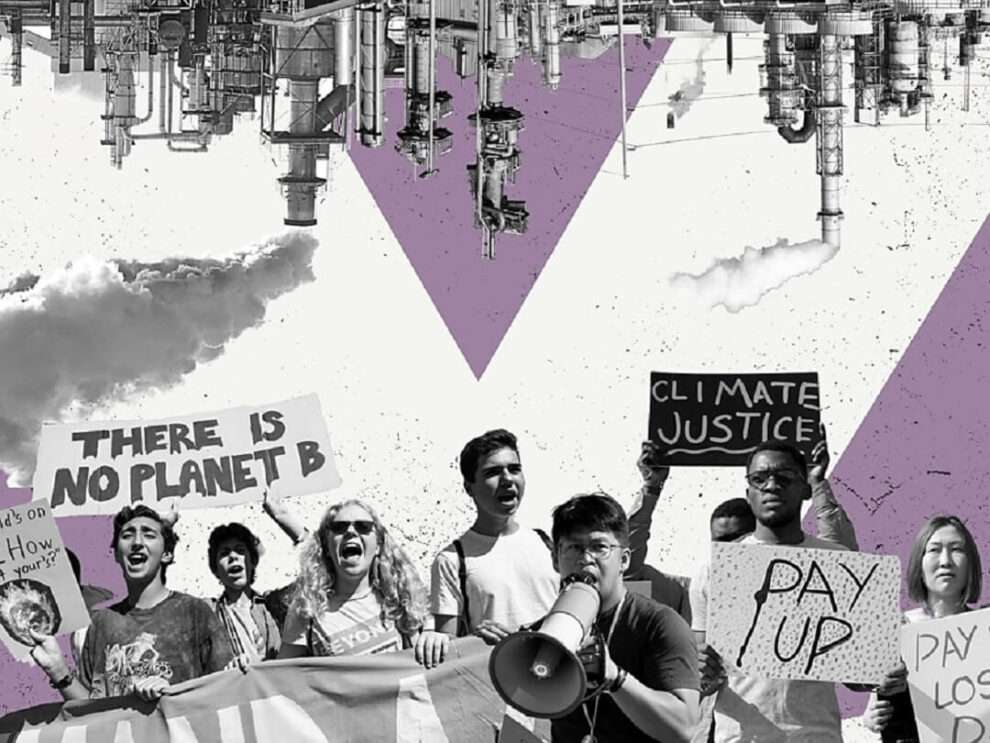
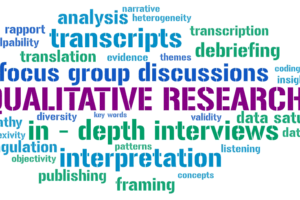
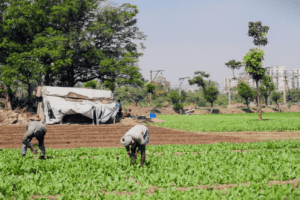

The economic development and CO2 emissions are positively related. The industrialized nations have been polluting the natural resources soil, water and air resulting in global warming, which is affecting the poor people the most. As the author brought out clearly that the nations which are primarily responsible for global warming are not affected to that extent when compared to underdeveloped nations. It is in this context the while seeking climate justice author reminded the developed nations about their moral obligation to succour the poor people who are being badly impacted by the global warming
The world is yet to realize the negative consequences of climate change which impact all the nations of course in different ways and magnitudes. As it is well known the impact of the global warming is ultimately shown on human health especially of the vulnerable people in the world. In addition to reducing the use of fossil fuels, it is also necessary to avoid wars and cut down expenditure on militaries.
War is always considered as a last , last , last ……… option because of its serious negative consequences impacting the livelihoods and health of millions of people It was reported that the Israel’s ground invasion of Gaza generated more than 281,000 tonnes of carbon dioxide in the first two month of the war ( the war is still on) which is greater than the annual carbon foot print of more than 20 of the world’s most vulnerable nations ( The Guardian, 15th March, 2024). Similarly one can imagine the impact of Russia and Ukraine war on the global climate. Ironically, the whole world is sitting pretty without taking any concrete steps to stop these wars.
It was also reported that militaries account for almost 5.5 % of global green gas emissions annually which is more than the aviation and shipping industries put together. Unfortunately, the global expenditure on militaries has been on the rise over the years resulting in furtherance of global warming.
Congratulations to Dr C. George Thomas for this thought provoking blog on global warming (not regional warming) and ways to address it. Hope the climate change issue will be viewed with all its seriousness by the world. Thanks to AESA for publishing this important blog.